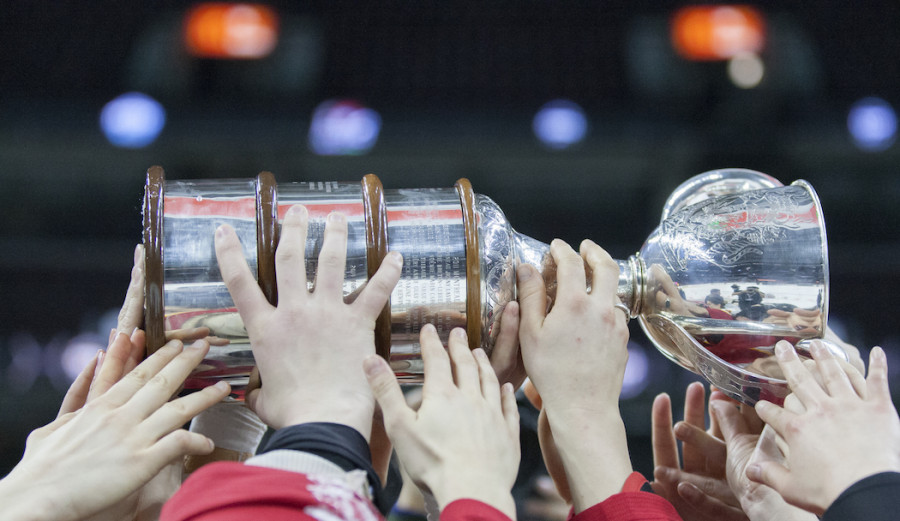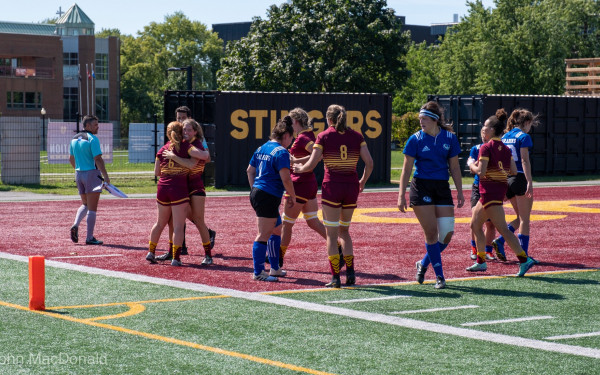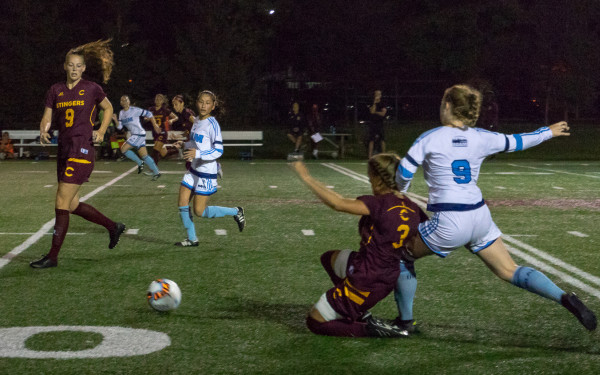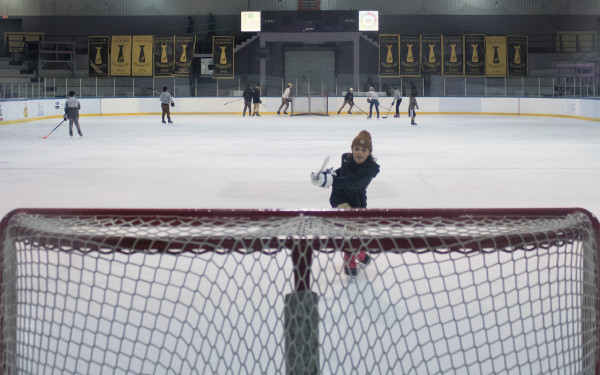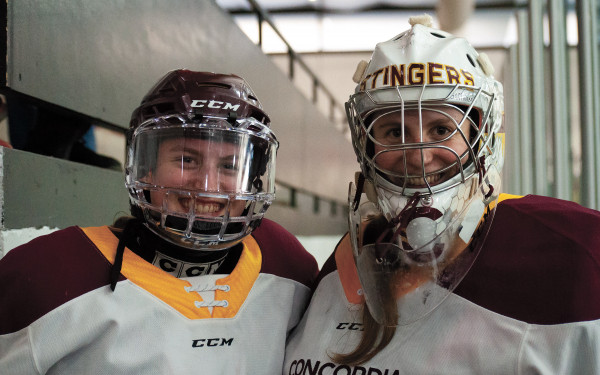Women’s Hockey: How a Cause For the Game is Lifting Hopes and Changing Lives
With The Gap Year in Full Effect Women Hockey Players Want Their Narrative to be Heard
“A gap year for us is really just being patient and waiting for the right opportunity and really setting up the right measures so that we can succeed,” said Melanie Desrochers.
When an unexpected shutdown of the only professional Canadian women’s hockey league was declared last month, fans and players alike flooded social media to share their sympathies and show support for a future where women can compete and play hockey at the highest level with proper compensation.
Though the now defunct CWHL operated for 12 seasons featuring six teams in total, with four across Canada, one in the United States and the other in China, the lack of income and an unstable business model forced the Board of Directors to pull the plug. But defender Melanie Desrochers of Les Canadiennes de Montreal is clearing the air as she made it known that the athletes will do what it takes to keep striving forward.
“Sure the league folded, but I don’t think it was a failure, it was just a step. We’re just gonna keep carrying that torch towards something that’s truly what women hockey players deserve,” said the Welland, Ontario native.
Among 200 of the world’s top women’s hockey players, who have formed a union and decided to take a gap year, Desrochers couldn’t help but point out how proud she felt to be a part of such a dynamic group of women.
“At some point women have to have a place to play professional, we have to have a place in this world.” – Lisa-Marie Breton-Lebreux
The Professional Women’s Hockey Players Association is currently standing in unity and taking a year to assess possible partnerships in order to rejuvenate the sport of women’s hockey, and Desrochers says she feels more confident the more time advances.
“I think what makes the difference is we have a lot of numbers on our side, a big group of women that are striving for a similar goal and we are just organized. We’re organized and we have an action plan.”
“I think what gives me confidence in sort of being a part of this group is seeing how quickly we’ve been able to make a lot of progress,” she concluded.
This imminent time away from the game has not only brought forth an undeniable demand for change but a breath of fresh air as these women are using their voice to own and tell their story from their perspective.
For The Victory Press’ Kirsten Whelan, who has covered the league since the 2015-2016 season, says this gap year is a look behind the scenes of an important time in history—one she is fully committed to being in—as she looks to thrive in her young career.
“I think it’s an interesting opportunity. There’s obviously a lot of grounds for reporting opportunities that maybe wouldn’t have existed otherwise because it’s such a moment of transition,” said Whelan.
“I think just being able to potentially be part of reporting on something as it’s really unfolding from the start is pretty cool and potentially something that could be a positive,” she added.
The Battle
Whelan’s fountain of knowledge in the women’s game stems from her childhood. She’s followed the game ever since her youth in Edmonton. However there’s no doubt that, now more than ever, the struggle she sees during this crucial time will be to find that exterior support.
The writer strongly believes in taking baby steps moving forward but made it clear “the resources are just never there for women and for young girls in the same way that they are for men in sports.”
Co-Founder, former player and Assistant Coach of Les Canadiennes in the dissolved CWHL Lisa-Marie Breton-Lebreux summed up the situation with one word: Patience.
“It is not time to rush things, we need to really think through what will be the best market, how are we gonna market that, who’s gonna invest. It’s really a reflection year,” said the three time Clarkson Cup champion.
Lebreux, along with ex-players Samy Jo Small, Kim McCollough, Alysson Fox, and Jennifer Botterill started the league with a business model that would cover travel costs, ice rental time, uniforms and equipment.
_900_600_90.jpg)
In the long run, the strength and conditioning coach at Concordia University admitted that this strategy wasn’t beneficial for the league because it was managed by a central budget. For investors, the partnership became less favorable.
“For the sponsors, it was less interesting because if they wanted to fund Les Canadiennes and give the team $50,000, this wasn’t possible. Parity among teams was necessary so our model was problematic,” said Breton-Lebreux.
Now, with the gap year up and running, Breton-Lebreux not only assures patience in looking for the right partners to establish a well calculated plan for the future, she confirms Quebec and Ontario will be forming their respective committees to build a sustainable league, in which women can play and earn what they deserve.
This league meanwhile, according to Concordia professor Moshe Lander, must avoid the trap of trying to grow too big, too early. The economics lecturer recalls the recent cancellation of the Alliance of American Football league, a start up league that folded after its eight initial games.
Kicking off on Feb. 9 earlier this year, Lander highlighted where things went wrong.
“The biggest mistake that start up leagues will make is that they try and say blanket too large of a geographical area,” he said. “The Alliance of American Football went bankrupt three weeks in, they were too widely spread.”
Although Lander, who also teaches at McGill and Dalhousie, believes this league can potentially build a model over 10, 20, and even 50 years where they can make their own financial visions and partnerships, he gave an insightful look on what’s needed to get there.
“The reality is […] it’s expensive. So, the business model is, you start with a small number of teams so that all of the talent is concentrated. You make sure that you hit your major hockey mad markets, and then you have to recognize that if you’re gonna travel it’s gonna be extremely expensive,” he then finished.
While Lander completely accepts and understands the measures these women have put in place to fight for what they deserve, he let it be known that the league’s success will go as far as these women take it and how much support comes and stays their way.
“I think that however long it exists there’s going to have to be underwriting coming from, if not the NHL, then there’s gonna have to be a corporate sponsor,” confirms the professor.
In this year of invisibility, “they need to blitz the media to say hey we’re still out here and we want you to be aware of what were doing and why were doing it. So they need to get their story across,” he added.
For The Game
Beyond the rink, the gap year has successfully rallied more than 200 professional women hockey players in the U.S. and Canada to fight for a common cause—improving the state of women’s hockey.
For Desrochers, the unity and solidarity represents how far women have come in society.
“I think what makes this [movement] different is the visibility. I feel like we’ve mobilized really well and it’s timely in the fact that we are in a time period where it’s kind of like a second wave of women’s movements,” said the 3rd year defender after confirming a partnership with Baylor Law Firm.
In Lisa-Marie Breton-Lemieux’s eyes, things are simple. Trust your instincts and results will follow.
“I think it’s only to come back stronger, hopefully. Of course there is always fear in the unknown but if you focus your thoughts on the positive and you focus your actions on talking to the right people, talking about it with hope, it’s gonna grow, it has to grow, we have to evolve,” said the former CWHL all star.
“At some point women have to have a place to play professional, we have to have a place in this world.”

